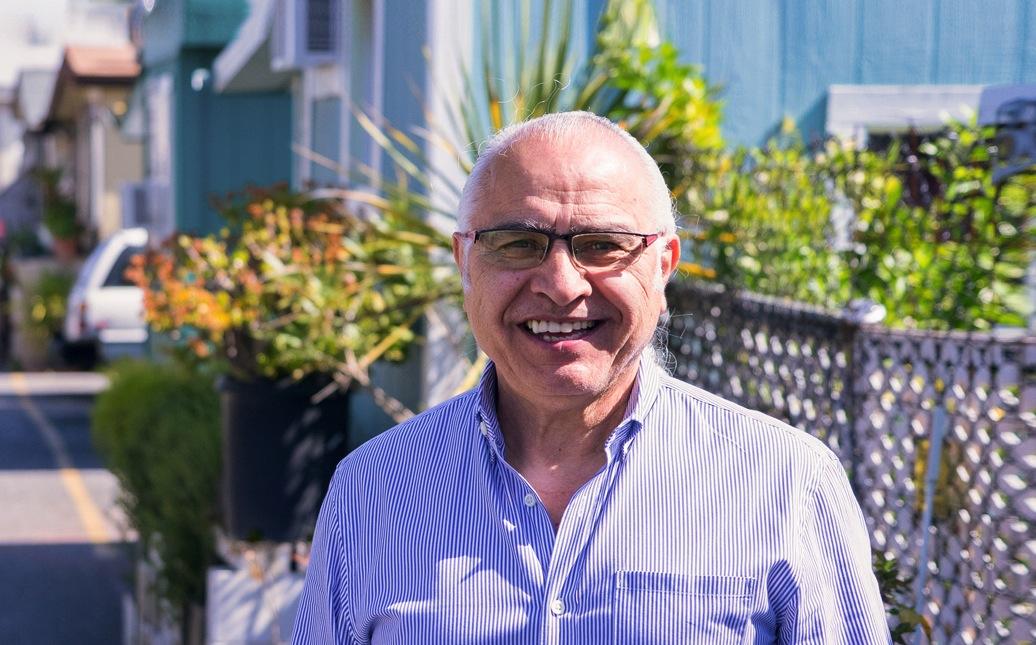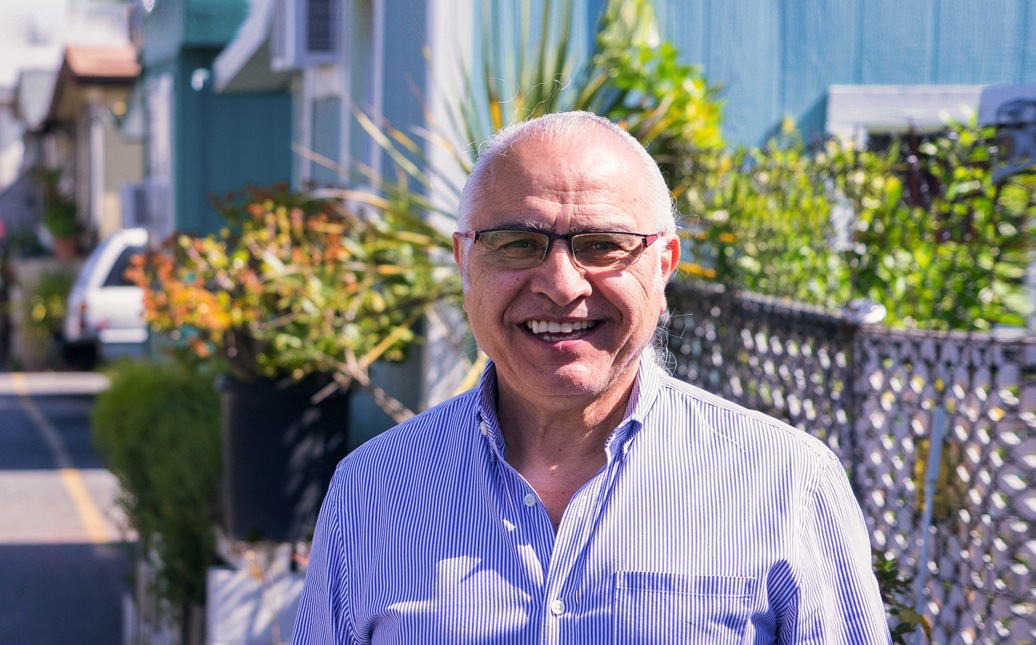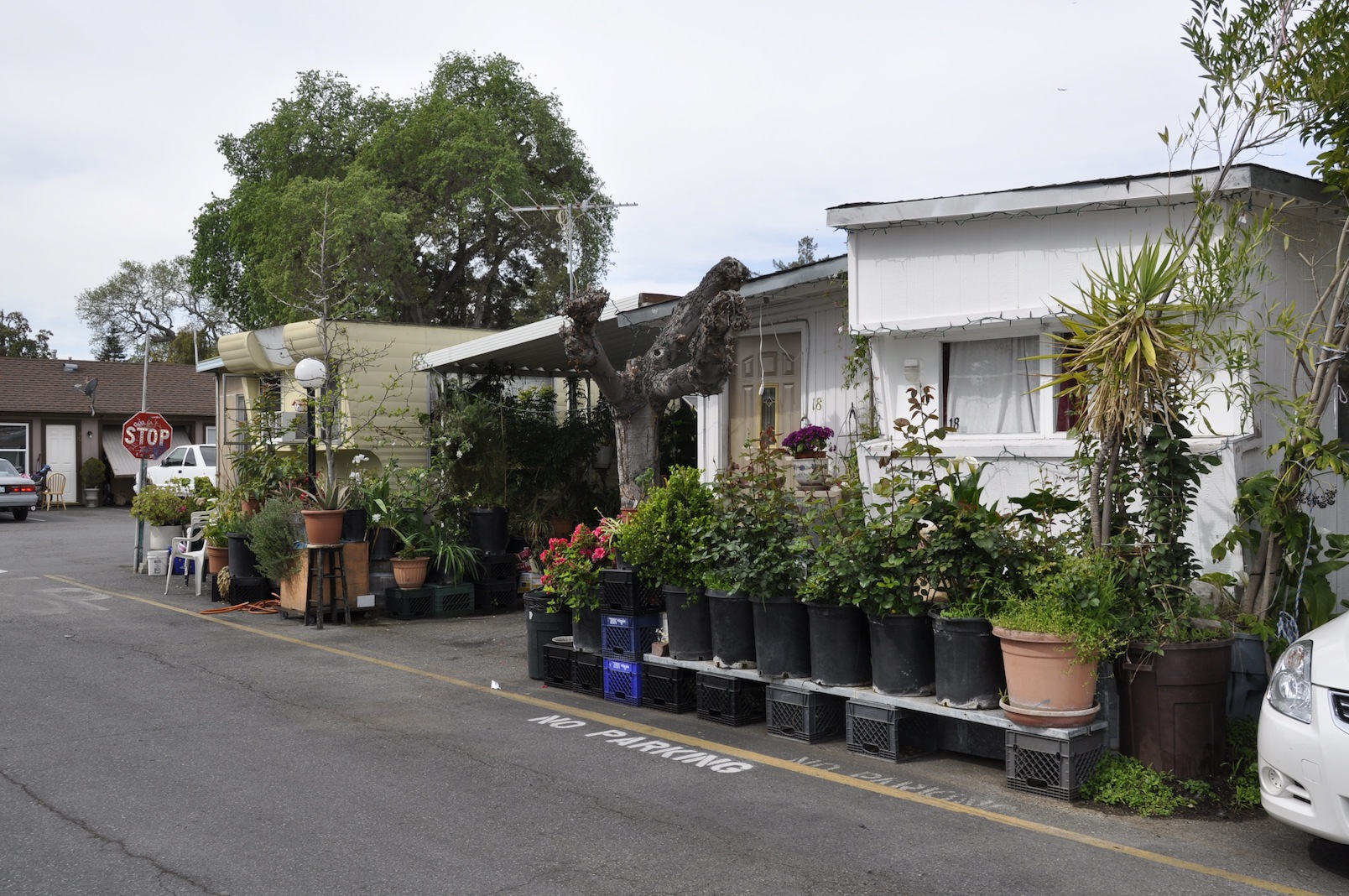
Scholar-activist advocates for those losing out on Silicon Valley’s benefits
The Buena Vista Mobile Home Park is arguably Silicon Valley’s most famous trailer park, the subject of stories in the Wall Street Journal, the Guardian and LeMonde, among others.
The 4.6-acre park, a few miles south of the Stanford campus and adjacent to multi-million dollar homes, has drawn the spotlight because of widespread concern about the growing gap between the one percent and everyone else. The only remaining trailer park in Palo Alto, it has become emblematic of the national debate over increased segregation by class and race, the demise of mixed-income neighborhoods, and declining access to the highest-quality public schools, which are often found in the most affluent communities.
 Since 2012, the Buena Vista’s owners have sought to close the park and replace it with a pricier development, a move that would likely force some 400 residents — mostly Hispanic families who are struggling to get by — out of Palo Alto. The park’s future is subject to litigation and negotiations between an array of parties, with one key issue being whether the owners should include the value of a Palo Alto education in any relocation payments they make to the residents.
Since 2012, the Buena Vista’s owners have sought to close the park and replace it with a pricier development, a move that would likely force some 400 residents — mostly Hispanic families who are struggling to get by — out of Palo Alto. The park’s future is subject to litigation and negotiations between an array of parties, with one key issue being whether the owners should include the value of a Palo Alto education in any relocation payments they make to the residents.
Amado Padilla, a professor at Stanford Graduate School of Education who had served on the Palo Alto Unified School District (PAUSD) board of education, became involved as an advocate for the residents several years ago. At that time, he also realized that their situation could help shed light on how education in a more diverse setting could affect children from lower-income families.
“There has been much conversation about minority students generally feeling alienated from school and this has been one of reasons given for the poor school performance of Latino students in California,” Padilla said recently. “I thought that Buena Vista offered an opportunity to study more closely a small group of Hispanic students who happen to be in one of the nation’s best districts. It seemed like it could offer insights that go beyond Palo Alto.”
Over the last four years, Padilla, a psychologist with an interest in the development of children and education, has conducted several surveys of students and their parents at Buena Vista. The results suggest that the Palo Alto schools are making a substantial difference in their lives. He recently completed his third report (co-authored with graduate student Juan Arias), which focuses on the youths and teens in the park. The report is based on a survey of 58 participants, from ages 14 to 20, who live at the Buena Vista.
What follows is an interview with Padilla done by email in March.
In analyzing the responses from your latest survey, what was the biggest surprise?
Amado Padilla: The biggest surprise for me was just how resilient the teens and young adults living in Buena Vista are, even while under the stress of knowing that on any day the owner of the park could issue a letter of closure. If that happens, the students will lose their school and their families may become homeless as they struggle to find a new place to live. But to our surprise the teens and young adults in our survey reported a high level of optimism for their future, including the idea of completing high school and progressing on to college. About 85 percent of the respondents described feeling upbeat about the future.
The respondents were also very positive about their schools. Were you expecting that?
AP: Again this was one of the most surprising things about the findings of the survey. The BV students demonstrated a strong sense of belonging to their school and felt that teachers cared about them. Roughly 90 percent of the respondents reported that they had received a high level of support from their schools. This presents a sharp contrast to results from comparable studies in PAUSD schools, in which 41 to 47 percent of the students reported feeling so positively about their schools.
How do youths at Buena Vista compare with students in PAUSD in other respects?
AP: This was an important question for my graduate student, Juan Arias, and me as we designed the survey. I knew that in 2010 a development assets survey was administered to all the students in our secondary schools in the PAUSD so we added a number of questions from the developmental assets to our survey.
 In a nutshell, the Buena Vista teens compared very favorably with the general PAUSD student population on such assets as having teachers and community members that care about them.
In a nutshell, the Buena Vista teens compared very favorably with the general PAUSD student population on such assets as having teachers and community members that care about them.
What about academics?
AP: Very few respondents reported that they did three or more hours of homework each night (males 10 percent and females 17 percent). Importantly, few of our respondents have the luxury of space in their cramped mobile homes to be able to study with any amount of privacy or time free of distractions from other members of the household. In this respect, the Buena Vista teens are at a major academic disadvantage compared to most PAUSD secondary level students who come from middle class homes where most probably have their own designated private study areas equipped with an Internet connection and a computer. Few of the homes in Buena Vista have an Internet connection much less a computer. These students must rely on computers at school for completing required homework assignments. Almost every one of the Buena Vista survey participants reported that they tried their best in school.
Is there any evidence that the youth at Buena Vista are doing better than Hispanic peers in Silicon Valley?
AP: The current dropout rate among Hispanic students in Silicon Valley is approximately 20 percent. However, in Buena Vista our work has shown that nearly all the students remain in school, graduate, and often continue on to a community college or university. The schools certainly have much to do with this success, but we also have to give a lot of credit to their families. Most of the families with children in Buena Vista are stable two parent families where at least one of the parents works in Palo Alto or nearby; they have resided in the mobile park for five or more years. Further, the parents say they have remained in Palo Alto because of the quality of the schools and the value they place on education for their children.
In spending time there with families, did you notice any things particularly striking that you’d want to share?
AP: When I go to the park I am struck by several things — the children play outdoors, and it appears to be a very safe and child friendly environment. Another thing is that most people care about their tiny spaces and fill them with potted plants, succulents and even fruit trees. Also striking is that the residents are friendly and open to non-residents like me and others who wander through the park.
How did you become involved with Buena Vista?
AP: I’ve lived in Palo Alto since 1988, and even by the late 1990s when I was on the PAUSD board of education and familiar with all the schools in the district, I never had heard anything about the mobile park or children living there. So in 2012 when I read about the closure I was curious about the residents of the park. I soon learned that there was a Palo Alto group called the Friends of Buena Vista and through them teamed up with another Stanford faculty member, Dr. Don Barr, a pediatrician and sociologist.
Together Don and I learned that one of the things missing was an accurate census of the residents of Buena Vista and so we undertook to do the census with a small group of Stanford undergraduates. More importantly focused on the children. We asked about the health status of the children, whether families had health insurance for the children, and also if the children were school age what grade they attended and how they were doing in school. This naturally led to the most recent study on the teens and young adults living in the mobile park and how they are doing both in school and emotionally.
What was your initial impression of Buena Vista? How has that changed?
AP: Initially, I was struck by how open the adults were to our questions about their children’s health status, and if the children were attending school, what grade and any special educational programs they might be in. We had 100% cooperation with the survey. The only thing that has changed is my understanding of how rooted the BV residents are to Palo Alto. Most have lived in the city for many years, they work in the community, and many children were born at Stanford Hospital. The residents may live in a mobile park, they may be low income, some are immigrants from different countries but Palo Alto is their home.
For a number of years, research suggested that neighborhood and community — where you grow up and live and go to school — doesn’t have a significant impact on educational outcome. Recent research has refuted this conclusion. What are the implications of your studies at Buena Vista in this respect?
AP: My belief is that living in Palo Alto has made a huge difference for the educational outcomes of children living in Buena Vista. As I said earlier, the children are successfully completing high school in Palo Alto and many are going on to post secondary education. We have college graduates living in Buena Vista, we have a Stanford student who grew up in the park, we have children with special needs who are attending schools here and receiving services they might not have gotten at less resourced schools. Our research is showing that children coming from low-income households, where many of the parents are immigrants, is not an impediment to completing a K -12 education in Palo Alto.
The future of Buena Vista is clearly a major local issue in Palo Alto. Is there some larger lesson to be drawn from it?
AP: There are several larger issues here. One of which is the question of affordable housing. How can low income workers in Palo Alto secure housing, provide the many services that residents of the city require, and send their children to schools that matter in changing the life trajectory of these children? Another issue is the question of whether education should be considered in the relocation cost if these families are evicted? This is a complicated question, but education should be included in a relocation package. Here’s why. BV residents have expressed not once but numerous times their desire to remain in Palo Alto.
 They are fighting to keep their homes here because they value the education their children receive. They could have quietly left and moved elsewhere, but fighting to keep their homes shows they care about quality of life and education for their children which are the same values that bring so many of the rest of us to Palo Alto. These families are no different and a mere relocation package that does not include some regard for the intangible value of living in Palo Alto would be grossly unjust.
They are fighting to keep their homes here because they value the education their children receive. They could have quietly left and moved elsewhere, but fighting to keep their homes shows they care about quality of life and education for their children which are the same values that bring so many of the rest of us to Palo Alto. These families are no different and a mere relocation package that does not include some regard for the intangible value of living in Palo Alto would be grossly unjust.
Anything else that you would like to share?
AP: I would like to end by saying that there are many good people in Palo Alto who in multiple and public ways have shown that they care deeply about what happens to the Buena Vista children and families. I have lived in this community for many years now and there are few instances that I can point to that have made me feel as proud of this community. I think Buena Vista has served to break down barriers between people of different social classes and ethnicities. Whatever happens to Buena Vista in the end, it will have served to make Palo Alto a better and more understanding community.



